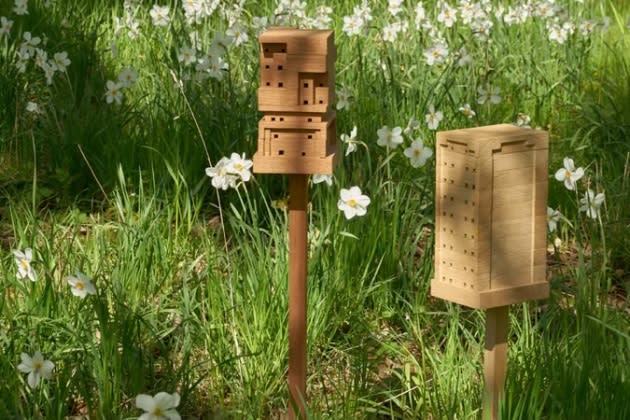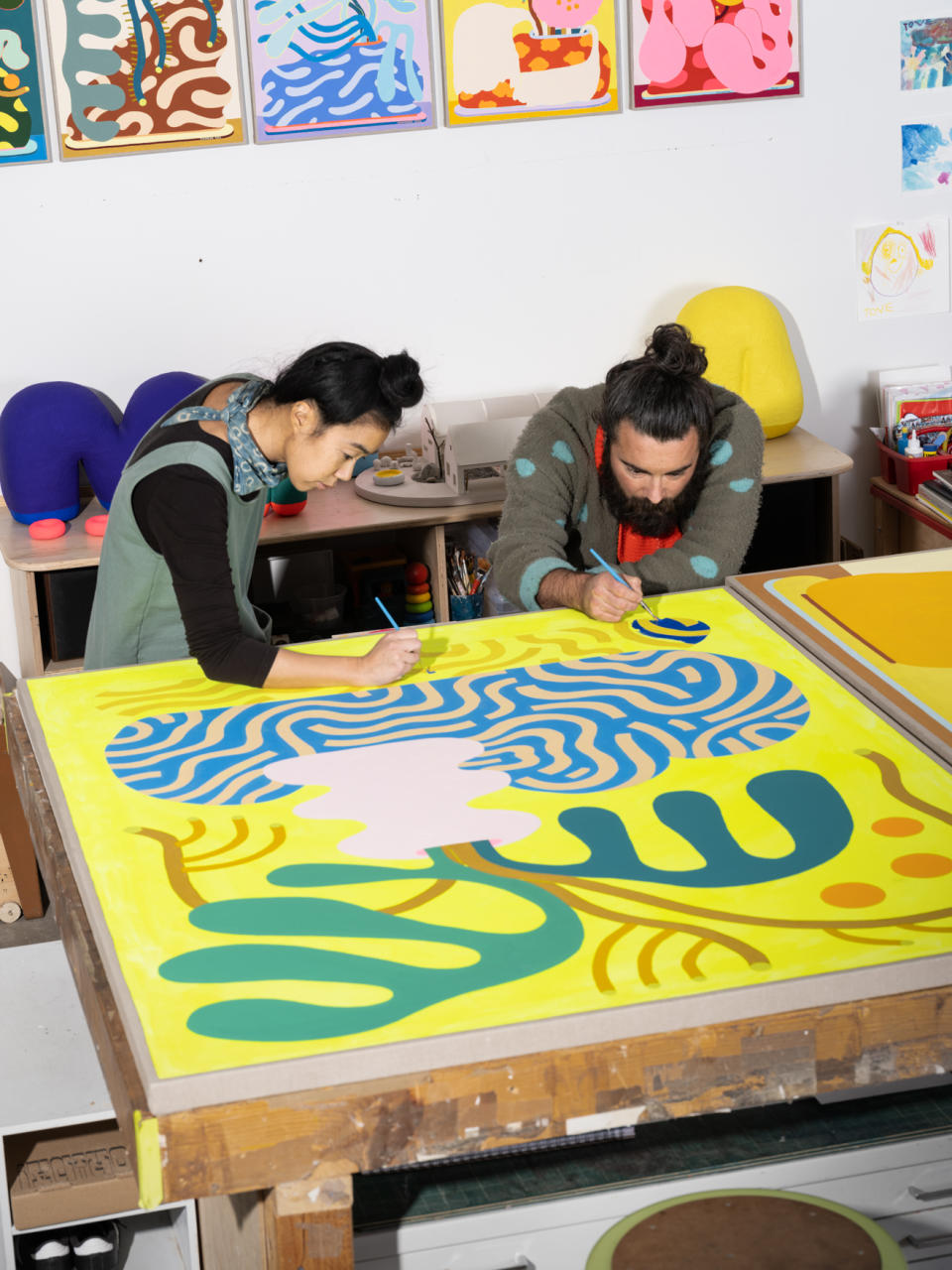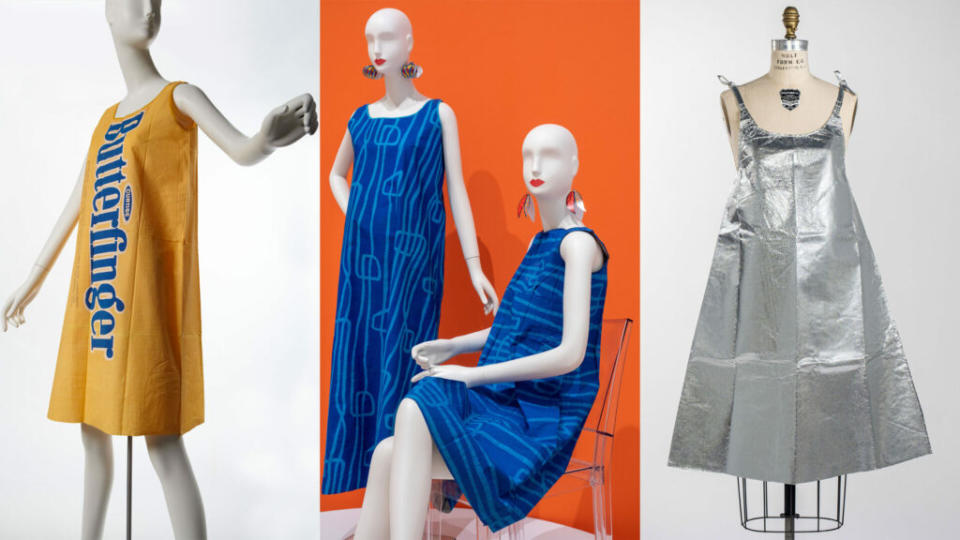New York City Design Week Is Not Just About Sofas and Lighting

If necessity is the mother of invention, what will the design community come up with in an era beset by fraying human communities and a deteriorating natural world?
The 11th annual NYCXDesign festival, which kicks off Thursday and runs through May 25, seeks to engage on some of these issues, without bumming out its intended audience of design enthusiasts and artists and creators who flock to the annual showcase to view innovations in lighting, furniture and public art.
More from WWD
Swatch x Jean-Michel Basquiat Collection Reimagines Iconic Motifs
Inside Avant-garde Fashion Photographer 'Gus' Peterson Spotlighted in New Exhibition
As Ilene Shaw, executive director of the festival put it, “good design is about solving problems.”
Here’s a partial list of the world’s many problems: climate change, food shortages, inequality in the global health system, empty office towers in need of residential conversion. A stylish, sustainable sofa or LED light fixture made with recycled metal won’t magically heal our fractured state and damaged planet. But as this year’s festival attests, growing segments of the design world are meeting the challenges of the moment.
“We’re designing more wisely,” adds Shaw. “We knew this for decades, and we began, as an industry, to design sustainably. Now there’s absolutely no tolerance. We must design sustainably.”
Anchored by three trade shows — ICFF (International Contemporary Furniture Fair), WantedDesign (which focuses on international emerging designers) and LightFair all at the Javits Center in Manhattan — this year’s weeklong festival includes dozens of installations and programs across the city that highlight sustainability, public art, inclusivity in design and architecture and innovations in science-based design.
The LightFair keynote on May 23 will be delivered by Karen Treviño, who has spent more than a decade at the U.S. National Park Service and is now the chief of the NPS Natural Sounds and Night Skies Division, which among other initiatives, seeks to preserve and restore acoustic and photic environments throughout the National Park System.
The opening-day webinar, “What Is the Carbon Footprint of a Piece of Furniture?”, breaks down the impact of every stage in the manufacturing and delivery of a typical chair, sofa or table and how designers and makers large and small can bend toward sustainability in materials, packaging, transport and disposal.
There will be a daily Virtual Circular City Tour exploring the design businesses and communities that are at the forefront of the circular economy — adopting proven and experimental sustainable practices for reducing waste and reusing resources — in neighborhoods throughout Manhattan, Brooklyn and Queens.
The NASA Deep Space Food Challenge — an international competition led by NASA and the Canadian Space Agency where teams create food technologies that can efficiently produce nutritious food for those on Earth and astronauts on long-duration space missions — also gets some exposure during the festival with an innovation showcase and panel discussion at Smart Design’s Brooklyn studio on Saturday.
Jean Lee and Dylan Davis, the creators of Ladies & Gentlemen Studio, curated the public design project, Public Access, at the Brooklyn Navy Yard. The installation, conceived by international collective Furnishing Utopia, seeks to democratize design by placing it in the public realm. Public Access features work from more than 39 international designers exploring ways design can inspire communal acts of sharing, an ethos that gained momentum during the pandemic when gatherings shifted to the outdoors.
“When the pandemic hit, it was a lot of reckoning with all of our values. And people were reevaluating how they spend their time and their connection to the world,” says Lee, citing pandemic-era Instagram feeds that were dominated by outdoor activities including gardening and bird watching.
Objects — or offerings, as Lee and Davis describe them — in the Public Access installation hosted by Head Hi include a Shaker-inspired seed library from L&G Studio, a series of stools made with repurposed wood pallets from Norway’s Minus Furniture, bee houses from Danish design lab SPACE10 and an outdoor mini fridge and pantry (a practice that gained momentum during the pandemic, especially in Queens and Brooklyn, where communities stocked outdoor refrigerators with free food for those in need) from One Love Community Fridge.
Lee and Davis — whose work includes lighting, furniture, jewelry and sculpture — sought to disengage design from commerce, says Davis. “We were thinking about designing toward communities and resourcefulness and the pandemic really set this line of thinking and solidified that format of this exhibit.”
Terri Chiao and Adam Frezza (collaboratively known as Chiaozza) also draw inspiration from nature. The couple are known for their large, brightly colored outdoor sculptures; they’ve mounted public installations at Coachella, New York’s Central Park and Industry City in Brooklyn. Their solo exhibition Slow Growth, opening Thursday at Uprise Art in Chinatown, includes a collection of paintings on linen and wall-based painted paper pulp sculptures. (There’s also an artist’s talk on Monday.)
“The title of this show comes at a time in our careers when we’re not trying to blast off base and become uber-famous artists,” says Frezza. “We’re really honing in on our craft and vision.”

That intentionality extends to their carbon footprint. The duo have done collaborations in the past; in 2019 for Ikea’s limited-edition carpets, and with Areaware on a set of colorful wooden wall hooks.
“We’ve been invited to do a lot more of those projects than we’ve done,” says Chiao. “As sculptors, we are very aware of how much material and resources our work uses and how much space it takes up. So when we do collaborations, we would like for it to be thoughtful and sensitive and a good alignment [and] with people who care about the social aspect of things, the way things are made, with what materials and how they’re gathered.”
Handbag designer Rebecca Minkoff will unveil a series of sculptural art panels with Los Angeles-based Borrowed Earth Collective and New York’s ABC Stone. The first collection, called Anthozoa, comprises three panels carved of 6-inch-thick natural stone and will be on view at ABC Stone’s Brooklyn studio space beginning Monday.
“Sustainability is core to my brand and everything I do,” says Minkoff, who last year launched a blockchain-enabled sustainability tool and supply chain tracking platform. “Stone requires less processing than synthetic materials, but experiencing the wonders of nature and working with stone firsthand has been eye opening. Unexpected veins and fossils show up in the middle of a block. It’s unbelievable that the Earth reveals millions of years of history in every piece that’s extracted. Also, because stone is completely reusable and can be returned to the Earth, it is recyclable in the truest sense.”
DWR and Knoll Textiles will debut the Nick Cave Collection, which encompasses 12 limited-edition Knoll furniture pieces upholstered in the collection and signed by the visual artist. The pieces will be auctioned online with proceeds going to Cave’s Facility Foundation, which supports emerging artists.
Friedman Benda gallery presents its second exhibit with British fashion designer and artist Samuel Ross. “Coarse” is a continuation of Ross’ interest in the historic visual languages of West African furniture, and includes material such as wood, metal, stone and marble lacquered with turmeric, honey and milk.
Herman Miller celebrates its 100th anniversary with a vintage pop-up featuring items from its archive at its 251 Park Avenue South flagship. There will also be new and limited-edition collectibles available for purchase, including Alexander Girard collection posters and a special-edition “Herman Miller: A Way of Living” monograph.

Museum shows include the Museum of Art and Design’s “Generation Paper,” which examines the short-lived 1960s-era trend of clothes made of paper and the Museum of Modern Art’s “Architecture Now: New York, New Publics,” which examines 12 projects across the city that aspire toward more accessible, sustainable and equitable cities.
So while the festival highlights new product launches, it’s also striving, two years after a global pandemic shut down all forms of communal gathering — and snarled supply chains — for a higher purpose.
“We as a people realized what’s most important to us, what’s most of value to us, because we were facing life and death,” says Shaw, who lost her best friend to COVID-19 in 2020. “We have come out of this traumatizing period, but it has forced us to look ahead, to be responsible. And in times of crisis we turn to creatives, to the artists in our community for inspiration. And I think that that is showing through. We are an industry of optimism and hope.”
Best of WWD

